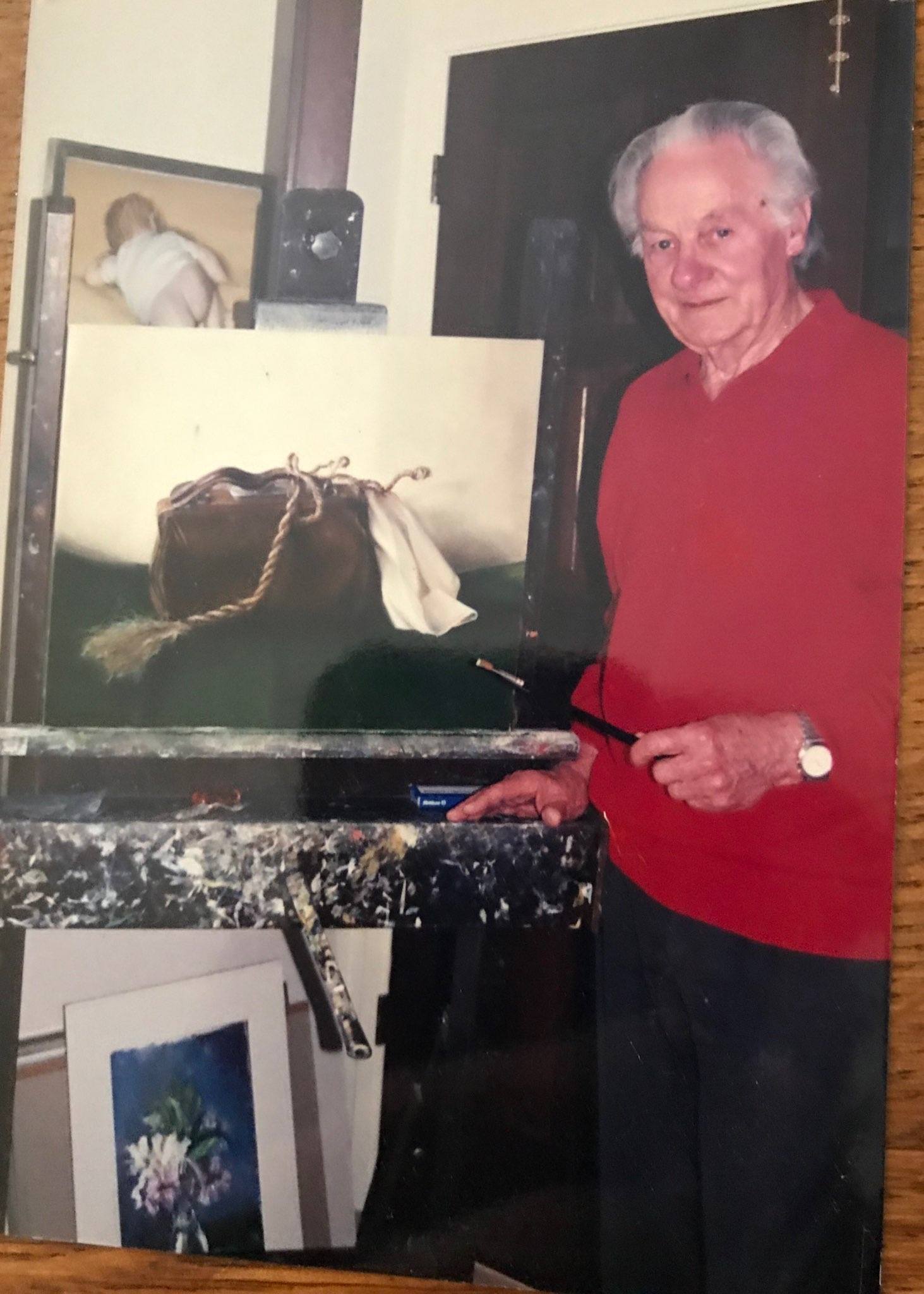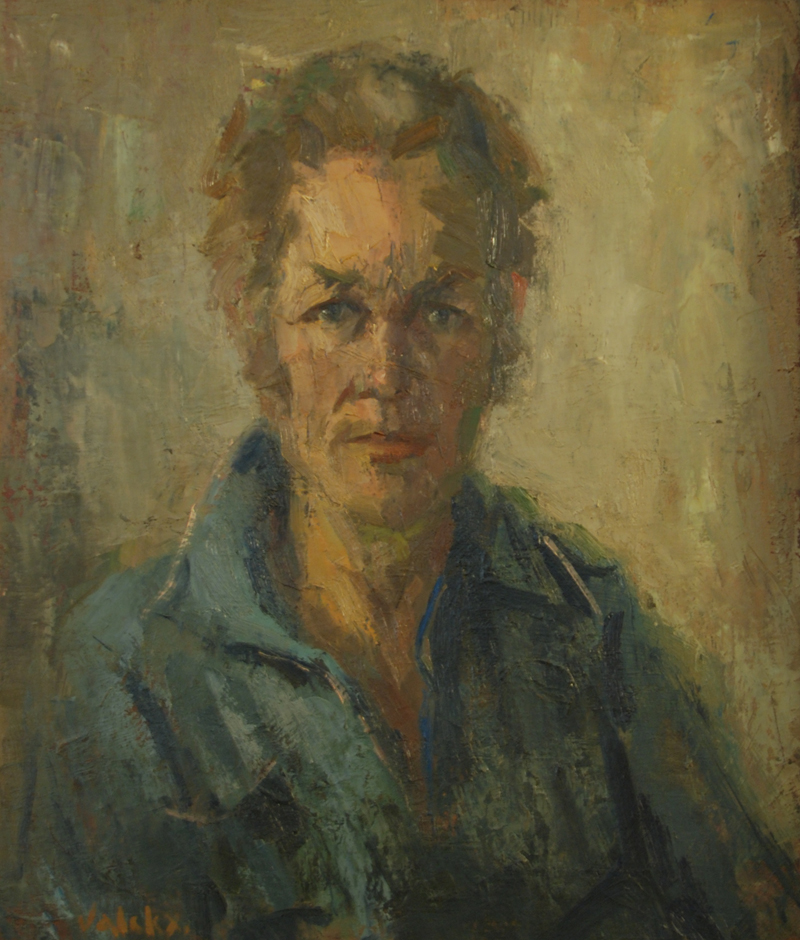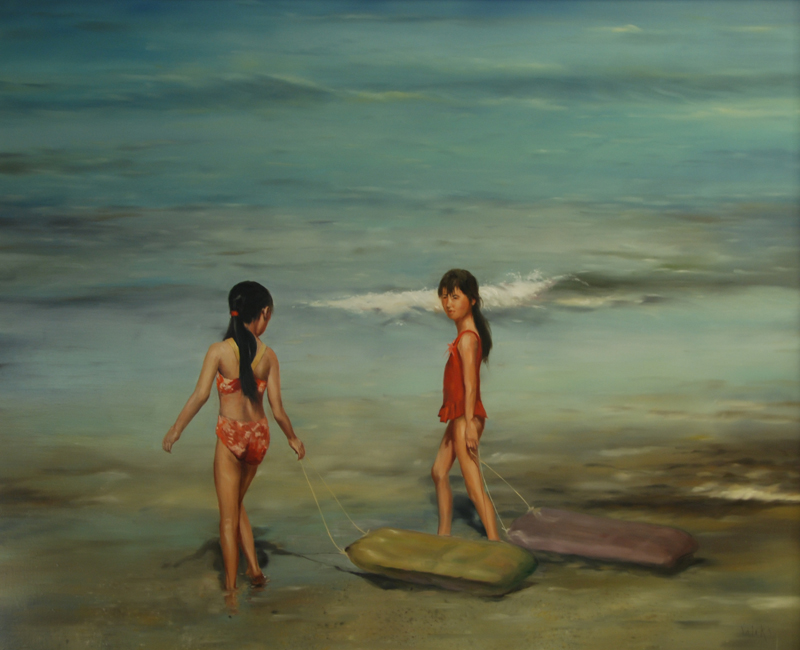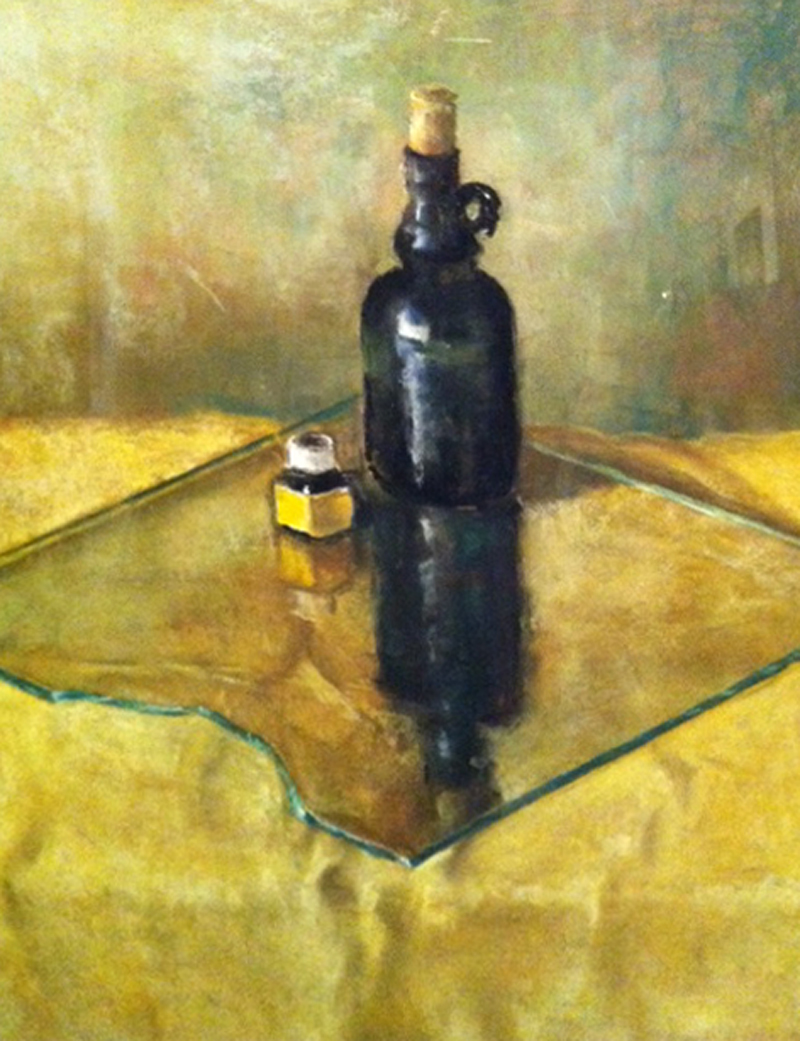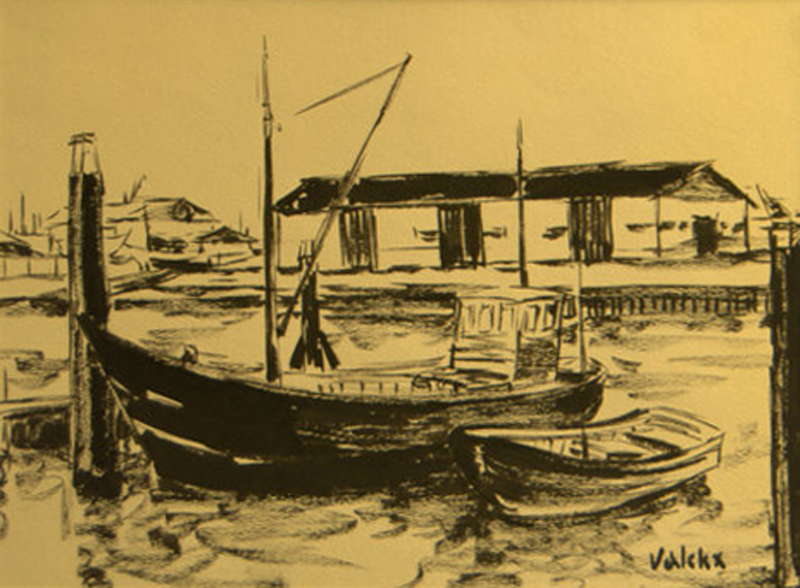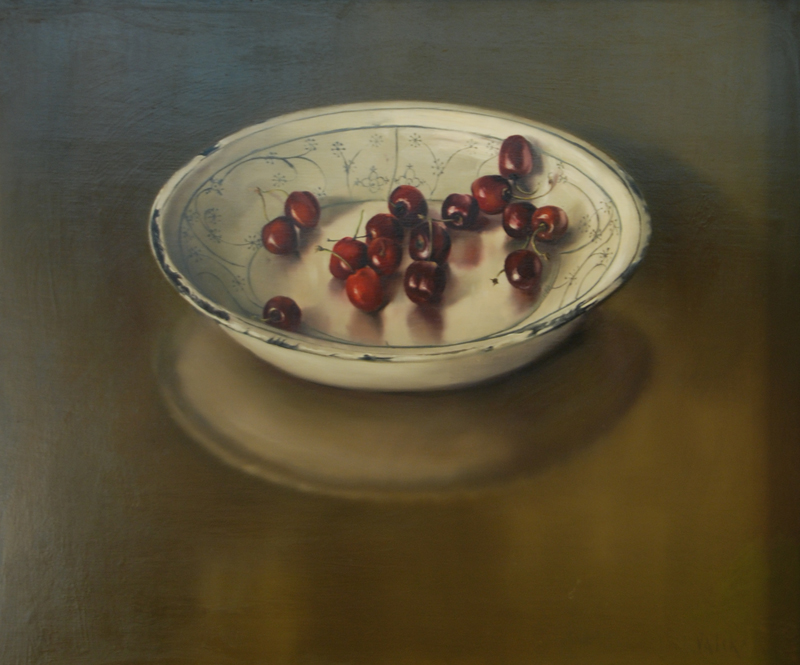In the Flemish Tradition
Petrus Valckx studied at the Borgerhout Communal School of Drawing and at Antwerp's Royal Academy of Fine Arts (Koninklijke Academie voor Schone Kunsten van Antwerpen).
World War II interrupted his education, but Valckx continued to improve his techniques, studying the works of great artists such as Rembrandt. Though he did most of his life's work in Europe, Valckx spent the final 13 months of his life sharing his artistic passions with people in America.
Petrus Valckx worked most of his life in the Flemish section of Belgium. Flemish artists have a lengthy history of creating trend-setting works. Flemish Primitive artists, such as Jan van Eyck, Hans Memling, Rogier van der Weyden, Dirk Bouts, Gerard David, and Hugo Van der Goes, were world-famous, creative innovators. Valckx, an artist of magnificent talent, deserves a place in that line of noble, creative, Flemish geniuses.
Even the terrors of World War II did not discourage Petrus Valckx from his artistic calling.
Personal History
- 1920 - Born in Ekeren in Antwerp, Belgium
- 1935 - 1942 - Studies Drawing at the Urban Drawing School in Borgerhout
- 1943 - Royal Academy of Fine Arts in Antwerp (Professor Alfons van Beurden)
- 1944 - Interruption of Studies Due to World War II
- 1947 - Resumes Studies at Royal Academy of Fine Arts in Antwerp (Professor Carl de Roover)
- 1955 - Study Trips to Germany and Austria
- 1958 - Study Trip to Italy (Venice)
- 1962 - Study Trip to Italy (Rome and Venice)
- 1973 - Begins to Exhibit His Works
- 1974 - Study Trip to the United States
- 1975 - Study Trip to Spain
- 1968 - 1980 - Study Trips to France, Particularly to Normandy Where He Owns a Workshop
- 1995 - Moves to Hayward, California
- 1996 - Passes Away in Hayward, California
Early Years
Valckx was born on September 6, 1920. While still in kindergarten, he drew a horse with such startling realism that his teachers could never bring themselves to throw it away. He even gave such detail as showing the horse's legs bent as a horse's legs would naturally bend. While still a teenager, he created paintings of impressive quality, hinting to the talent he was to develop and possess.
The War Years
Valckx spent a lifetime consumed by art. Neither his mother's efforts to discourage him, nor his poverty, nor even the terror of World War II could divert him from his artistic calling. During the war, he made almost daily trips to the arts academy in Antwerp, often defying curfews and ignoring the bombs and rockets falling from the sky.
He spent nearly a year in hiding, concealed in a basement, dodging German soldiers. If he were captured, they would ship him off to work in factories in the German homeland. Even during these trying times, he continued to work diligently at his easel and notebooks. At the war's conclusion, the young artist painted portraits requested by Allied soldiers of their girlfriends in exchange for food and cigarettes. He was eventually recruited to paint portraits of American officers and office holders in a more official capacity, including a commissioned portrait of President Franklin D. Roosevelt.
Post-War Painting
Valckx's professional life as a painter began at the most basic level: house-painting with his three brothers. They specialized in faux painting, creating painted surfaces resembling marble. Valckx worked six days a week at his house-painting trade. On Sundays, he would disappear into his attic studio, where he labored at his art on canvases illuminated by sunlight that shined through a large skylight installed in the roof.
Petrus Valckx's Post-War Success
Valckx's earliest works were in a roughly abstract, Neo-expressionist style that was popular at the time, featuring recognizable objects painted with vivid colors and commonplace color harmonies. Every few years, he made the trip to Amsterdam and visited the Rembrandt museum. Following these visits, he would sometimes throw his current paintings into the stove and then spend the next six months in a morose, non-productive state. Fortunately, Valckx's yearning to make art would break down his self-depreciating attitude and drive him back to his palettes and canvases.
Although a supremely gifted artist, Valckx remained shy and humble throughout his life. He shunned anything that hinted of an attempt to attain status as a celebrity. A TV newscaster once looked at one of Valckx's paintings and asked, "Can you explain what you feel when you look at the painting?"
"It's hard enough to paint it," Valckx replied in a brisk manner. "Don't ask me to explain it," which ended any hope the newscaster might have for an interview.
The course of Valckx's art and life changed abruptly at one of his expositions when Marcel van Jole, an esteemed art critic as well as art professor and curator of Antwerp's Museum of Fine Arts, saw his Neo-Expressionist work. Van Jole explained to Valckx that his style was out of date. "Can you paint in a realistic style?" he asked him.
"Of course I can," Valckx answered. He subsequently made a couple of small paintings and showed them to van Jole, who had an immediate, positive response to them. Van Jole began to coach Valckx and to critique his work. He had great contacts and assisted Valckx in getting his pieces into the hands of collectors and museum curators. In the early 1980s, van Jole enhanced Valckx's growing reputation as one of Belgium's finest artists. He wrote a flattering monograph about Valckx's art, praising the "magic" of his pieces as "radiating vibrant colors and joyful, cheerful light."
Valckx's trend-setting works often focused on such simple articles as rocks, chicken wire, and clothing, each object rendered with an evocative degree of exquisite detail. He also created a series of landscapes and natural scenes that revealed how nature had seduced his mind, spirit, and imagination.
Valckx carried his sketchbook with him on his travels and used it in the same way other people would use a camera. He captured scenes, images, and objects that could become source material for major works when he returned to his studio. In his monograph, van Jole praised the quality of those sketches, comparing some of them to the sketches of Rubens and Picasso. He wrote, "Real jewels, dense, and full of color." He went on to praise Valckx's art as "passionate, sensitive, and sensual."
Petrus Valckx's Worldwide Success
In 1974, Petrus Valckx travels to the United States.
Valckx began to sell his paintings in a worldwide marketplace, and some of his works now reside in museums and in private collections in the United States, Canada, France, Germany, Argentina, Brazil, and other places around the world. One of his paintings is part of King Feisal's personal collection.
His works can be found at New York's Rockefeller Art Center, Israel's Dimona Museum, and in Canada's Museum of Greater Victoria.
Perhaps the most moving work that Valckx ever completed was a painting of his wife's hands in quiet, prayerful repose, symbolizing her graceful beauty. When his wife, Jeanne, was alive, he never painted her. He would confess, "I don't know why I can't paint my wife." After Jeanne's death, however, Valckx found the ability to capture her on canvas, recreating her image from snapshots.
Her death struck a blow to Valckx's spirit from which he never fully recovered. He revisited her memory and renewed his grief each year on her birthday, at their anniversary, and at the anniversary of her death.
The Final Years
In the late 1980s, Valckx suffered a heart attack and also contracted cancer. In 1995, he moved to Hayward, California, to live with his son, Harrie, and his daughter-in-law, Aida. Valckx's final years were some of his most productive. He painted at a furious rate, often spending seven days a week in his studio.
Valckx enjoyed the natural brilliance of the California sunshine and light. He found it a welcome relief from the sometimes gloomy Belgian skies. At times, when his work required clouds, he would borrow clouds from one of his European paintings. He seemed consumed and tireless. As the light faded in the evening, he would quit working on canvases and switch to working in his sketchbooks.
Valckx's long-held dream was to do an exposition in New York. Not unlike most European artists, he regarded a show in New York to be the equivalent of an artistic Holy Grail. In 1996, Valckx finally achieved that lifelong goal when he signed a contract for an exposition in New York's Paulina Rieloff Gallery, a part of the New York Design Center. The show was scheduled to begin November 12, 1996. Valckx began working day-and-night to ready for the opening, paying close attention to every detail, including making his own frames.
Twenty-nine days before the scheduled exposition, on October 14, 1996, Valckx suffered a fatal heart attack. His exposition was conducted posthumously, followed by a second major exposition in Belgium. Between the two events, every painting included in the exposition sold. The exposition notes concluded with a summary that captures the essence of Valckx and the body of his incredible work:
"In a century in which the values of excellent craftsmanship and mastery of drawing and painting techniques have frequently fallen by the wayside, Valckx's refinement of traditional skills, and the imaginative and poetic uses to which he puts them, elevate him to the first rank of artists working today."
Valckx's son, Harrie, worked diligently to preserve the memory of his father. Not long before his own death in 2009, Harrie said, "I want to tell [father] that people on earth remember Petrus Valckx; that I did what I could to keep them from forgetting."
The world will be a less colorful place if we forget what Petrus Valckx achieved, or if we lose sight of the amazing body of work that he left behind.
